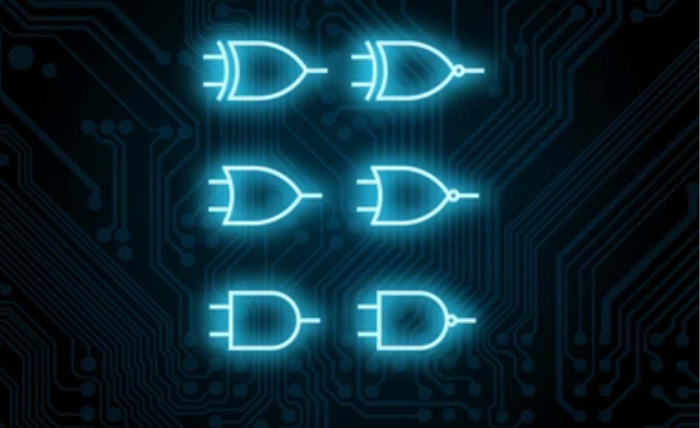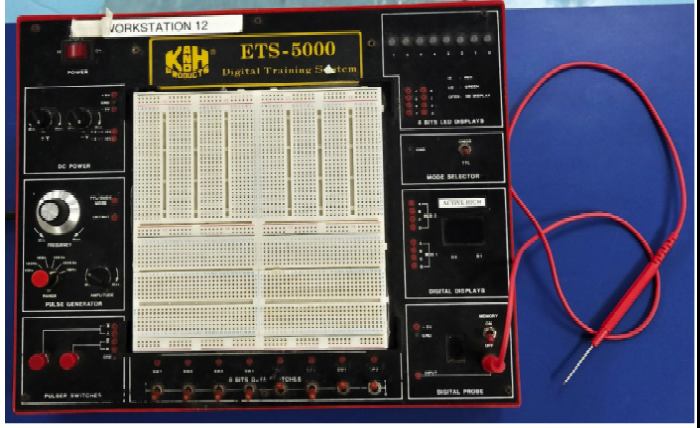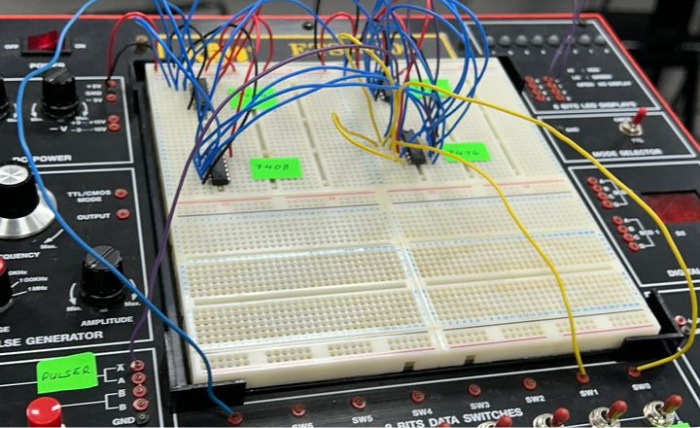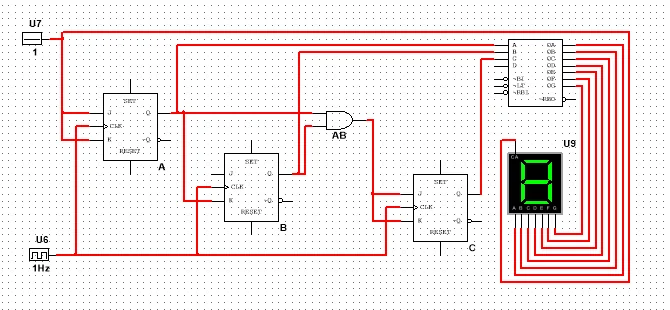Digital Logic / SECR1013 - 02
Labs and Final Project
Throughout 14 weeks, the Digital Logic subject provided extensive exposure to practical circuit assembly, particularly through Lab 1 and Lab 3 assignments. Additionally, we were guided by our lecturer to use the DEEDS simulator application, a software capable of designing circuits based on our own concepts. Our proficiency with DEEDS was tested through Lab 2 and the Final Project assignments.

Introduction of Digital Logic
Digital Logic is a fundamental subject in electronics and computer science that focuses on the rules and techniques used to design and analyze digital circuits. It serves as the backbone of modern digital systems, including computers, microprocessors, and communication devices. The subject covers topics such as binary number systems, logic gates, Boolean algebra, and the design of combinational and sequential circuits.
- Understanding how numbers are represented in binary, octal, and hexadecimal systems.
- Circuits with memory, where the output depends on both current inputs and past states (e.g., flip-flops, counters, registers).
- Karnaugh Maps (K-maps): A method for simplifying Boolean expressions to optimize circuit design.
- The building blocks of digital circuits, such as AND, OR, NOT, NAND, NOR, XOR, and XNOR gates.
- Circuits without memory, where the output depends only on the current input (e.g., adders, multiplexers, decoders).
Knowledge :
Reflection : What is your reflection for the subject ?
The ability to think logically and analyze data or systems comprehensively has been successfully mastered by me. This achievement has significantly enhanced my efficiency in devising well-structured strategies for various tasks and challenges. Consequently, it has also strengthened my capacity to approach problems systematically and deliver solutions effectively, ensuring that each task is executed with precision and excellence.

Lab 1 : Introduction to Logic Circuit
The purpose of this lab is to provide hands-on experience in understanding and applying the fundamental principles of digital logic. This involves constructing, analyzing, and simplifying logic circuits using truth tables and Boolean algebra.
- Analyze the behavior and functionality of basic and universal logic gates such as AND, OR, NOT, NAND, and NOR.
- Construct and verify truth tables for various logic circuits.
- Simplify logic circuits using Boolean algebra and evaluate their equivalency to standard logic gates.
- Develop problem-solving skills by designing efficient and optimized logic circuits for specific outputs.
Skills Successfully Acquired in This Lab:
Reflection for Lab 1 : What actually the biggest impact that you get by completing this Lab 1 ?
Lab 1 was completed with hands-on experience using the ETS 5000, which truly amazed me. At first, I was shocked by the small diameter of the wires, but over time, the lab was successfully completed as part of the second group. It was learned that focus needs to be maintained in every task, and a good strategy must be planned for every decision. It was realized that every decision made must be considered carefully, as there is no turning back once it has been made.
Lab 2 Materials
Lab 2 Answer Sheet : Click hereCircuit Part A (D) : Click here !!
Circuit Part B (iii) : Click here !!
Circuit Part B (V) : Click here !!

Lab 2: Combinational Digital Circuit Design Simulation Using Deeds Simulator
The primary focus of this laboratory session is to introduce students to the principles of designing and simulating combinational digital circuits using the Deeds (Digital Electronics Education and Design Suite) Simulator. This lab aims to enhance the students’ understanding of hands-on experience with the Deeds Simulator. This tool provides a user-friendly graphical schematic editor tailored for educational purposes, enabling students to design, simulate, and analyze digital circuits effectively.
- Manage to familiarize myself with the process of designing and constructing combinational digital circuits using the Deeds Simulator
- I'm enable to generate truth tables and analyze timing diagrams for combinational circuits.
- This give me a chance to get hands-on experience in deriving and simplifying Boolean expressions using rules, laws, and De Morgan’s Theorem.
- To give myself a relevant exposures validate the functionality of designed circuits by comparing theoretical expectations with simulation results.
Skills Successfully Acquired in This Lab :
Reflection for Lab 2 : What actually the biggest impact that you get by completing this Lab 2 ?
Lab 2 was a highly valuable experience that provided a deeper understanding of designing and simulating combinational digital circuits using the Deeds Simulator. This lab allowed me to explore the complete process of circuit design, from creating truth tables to verifying outputs through simulation. One of the most valuable aspects was learning to simplify Boolean expressions using De Morgan’s Theorem and Karnaugh Maps (K-maps), which not only optimized the circuit design but also enhanced my problem-solving skills.

Lab 3 : Identtifying The Properties Of a Synchronous Counter
This lab focuses on exploring and understanding the properties of a synchronous digital counter. A synchronous counter is a sequential circuit where all the flip-flops are triggered simultaneously by a common clock signal, ensuring synchronized operation. In this lab, students will gain hands-on experience constructing a synchronous counter circuit using JK flip-flops, basic logic gates, and additional components such as breadboards and digital kits.
- Gained hands-on experience in constructing a synchronous counter using JK flip-flops, basic gates, and a breadboard, enhancing circuit assembly and wiring skills.
- Learned to analyze the operation of JK flip-flops, including their triggering mechanisms and role in sequential circuits.
- Acquired the ability to determine and document state transitions based on the present state and input conditions, an essential skill for sequential circuit analysis.
- Applied critical thinking to analyze circuit behavior, identify properties of synchronous counters, and address questions related to counter functionality, such as input roles and state transitions.
Skills Successfully Acquired in This Lab :
Reflection for Lab 3 : What actually the biggest impact that you get by completing this Lab 3 ?
The most significant impact I gained from completing Lab 3 was a deeper understanding of how synchronous counters operate and their practical implementation. This lab bridged the gap between theoretical concepts and hands-on experience, allowing me to see how JK flip-flops and basic logic gates work together to create sequential circuits. Constructing and analyzing the synchronous counter improved my ability to troubleshoot and validate circuit designs, which is a crucial skill in digital electronics.

Final Semester 1 Project : 3 Bit Synchronous Counter JK Flip Flop
To be continued.....
Karnaugh Sons : Group Members
- Aman Sufian Shah Bin Shamsuddin Bin Shamsuddin
- Haritz Haykal Bin Nazrul Hisham
- Mirza As - Siddiq Bin Tohari
- Muhammad Al - Hakimi Haikal Bin Romi Sabihin
